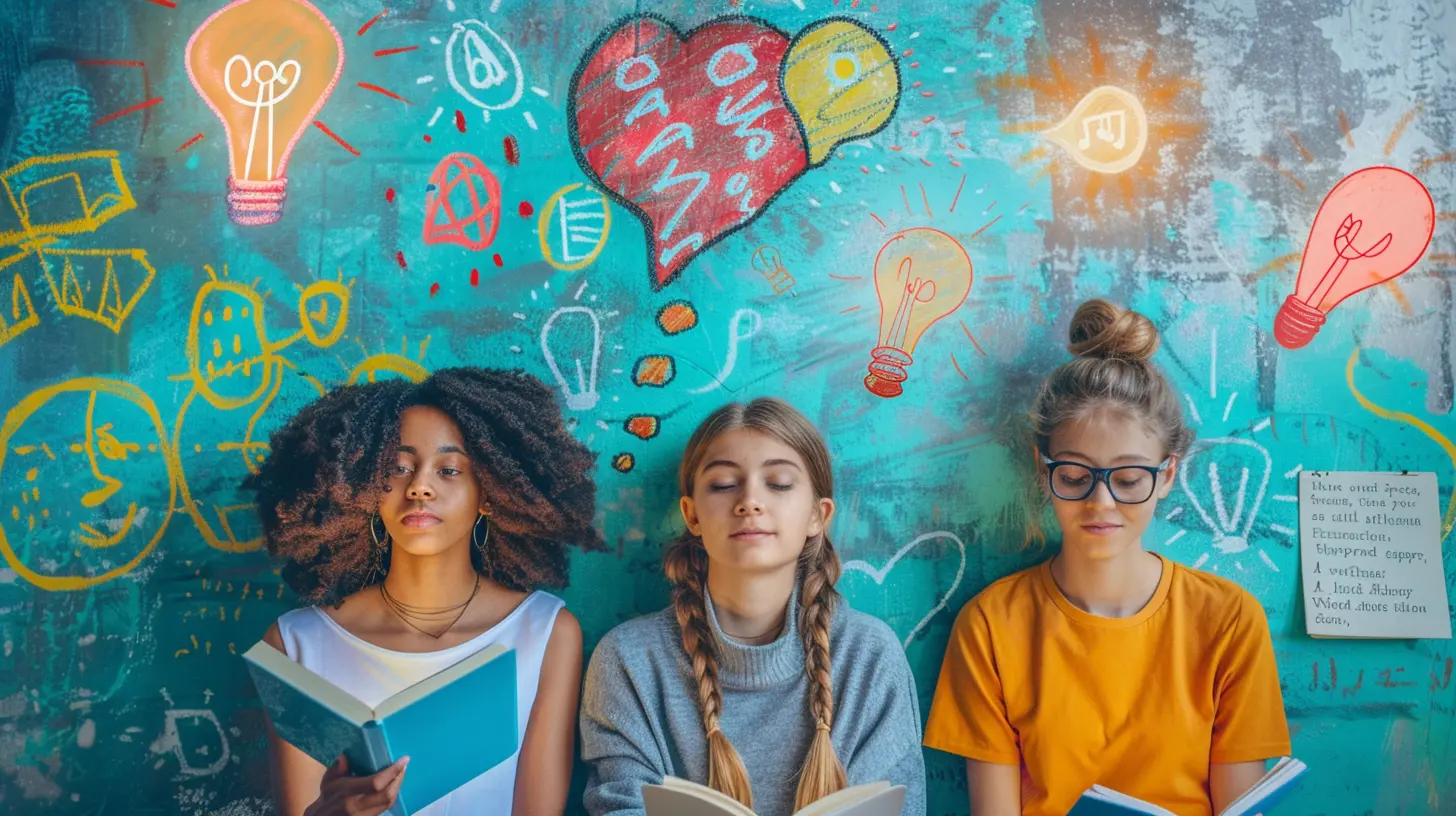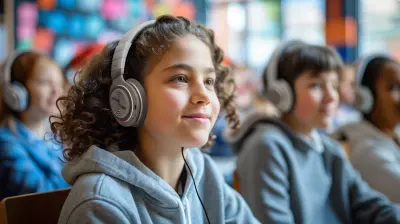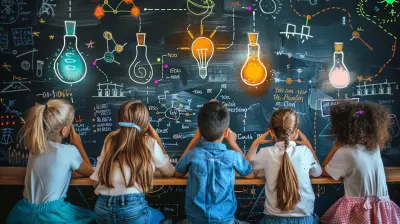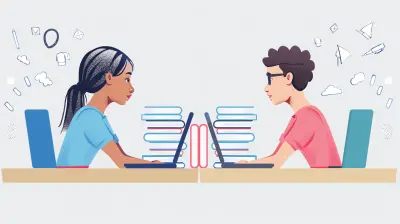27 November 2024
In today’s fast-paced educational environment, it’s no secret that students learn in different ways. Some students prefer to listen, while others need to see things on paper (or a screen) to fully grasp the concept. Still, others might need to get their hands dirty and literally "do" something in order to understand it. But have you ever wondered how these varied learning styles connect to student motivation?
This connection between how students learn and how motivated they are to learn is absolutely crucial. After all, if a student isn’t motivated, even the best teaching methods won’t yield great results. Let’s dive into the fascinating relationship between learning styles and motivation and explore how understanding this link can transform the learning experience.
What Are Learning Styles?
Before we get too far ahead, let’s define what learning styles actually are. Simply put, learning styles refer to the methods individuals prefer to use when absorbing, processing, and retaining information. It’s like having different roadmaps that guide each student to the same destination—understanding.Although there are several models of learning styles, one of the most widely recognized is the VARK model, which categorizes learners into four primary groups:
1. Visual Learners: These students learn best through images, diagrams, and visual aids.
2. Auditory Learners: They prefer listening to lectures, discussions, or even audiobooks.
3. Reading/Writing Learners: This group thrives with written words, whether it’s textbooks, essays, or note-taking.
4. Kinesthetic Learners: They need to engage physically with the material, often through hands-on activities or real-world examples.
Each student may have a dominant style or a blend of different styles. Now, here’s where things get interesting: these learning preferences are directly tied to how motivated students feel in the classroom.
The Impact of Learning Styles on Motivation
1. Personalized Learning Increases Engagement
Imagine trying to learn something in a way that just doesn’t click with you. Frustrating, right? If a student is forced to learn in a manner that doesn’t align with their preferred style, they’re likely to feel disconnected or even bored. And we all know what happens when students are bored—they zone out.On the flip side, when lessons align with a student’s preferred learning style, something magical happens. They become more engaged, more curious, and more motivated to dive deeper into the material. It’s like giving them the key to unlock their potential.
For example, a visual learner who is given access to graphs, charts, and videos will be far more invested than one who is only given text-heavy documents. Tailoring instruction to individual learning preferences isn’t just about helping students learn better; it’s about keeping them motivated and excited to keep going.
2. Learning Styles Reduce Cognitive Overload
Ever felt completely overwhelmed while trying to learn something new? That’s cognitive overload. This happens when the brain is bombarded with too much information, or the wrong type of information, at once.When learning styles are taken into account, the chances of cognitive overload decrease. This happens because the student is able to process the information in a way that feels more natural to them. It’s like trying to swim with the current instead of against it. The smoother the learning process, the more students feel confident in their abilities, and in turn, the more motivated they are to take on new challenges.
3. Building a Sense of Mastery
One of the core drivers of motivation is the sense of mastery. When students feel they are mastering a subject, they’re more inclined to stay motivated and continue learning. Learning styles play a key role here. If a student learns in a way that suits them, they’re more likely to experience those “a-ha!” moments where everything clicks.For instance, a kinesthetic learner might struggle with abstract mathematical concepts until they’re given the chance to physically manipulate objects or use interactive tools. Once they “get it,” the sense of achievement drives them to tackle even more complex topics.
The bottom line? When students feel successful, they’re more likely to stay motivated.
How Teachers Can Leverage Learning Styles to Boost Motivation
It’s clear that learning styles and motivation are deeply interconnected, but how can teachers use this knowledge to inspire their students? Here are some actionable strategies that educators can implement in the classroom:1. Incorporate Varied Teaching Methods
Since no two students are exactly the same, it’s essential for teachers to mix up their teaching styles. Incorporating a variety of methods—visual aids, group discussions, written assignments, and hands-on activities—ensures that every student has a moment to shine.For example, if you’re teaching a science lesson, you can start by showing a video (visual), followed by a group discussion (auditory), and then have students conduct a hands-on experiment (kinesthetic). This approach caters to different learners and keeps everyone motivated.
2. Offer Choice and Autonomy
Giving students the freedom to choose their learning methods can significantly boost motivation. When students feel like they have control over how they learn, they’re more likely to take ownership of their education.For instance, instead of assigning a one-size-fits-all project, offer a few different options. A visual learner might prefer to create a presentation, while a kinesthetic learner might want to build a model. By offering choices, teachers empower students to engage with the material in a way that feels natural to them.
3. Provide Immediate Feedback
Feedback is a powerful motivator, especially when it’s timely. When students receive feedback that aligns with their learning style, they’re more likely to understand where they went wrong and how to improve.For example, an auditory learner might benefit from verbal feedback during a one-on-one conversation, while a reading/writing learner might prefer detailed written comments. When students see clear evidence of their progress, they feel more motivated to keep pushing forward.
Can Learning Styles Alone Guarantee Motivation?
Now, it’s important to note that learning styles aren’t the only factor influencing student motivation. There are numerous other elements at play, such as:- Emotional well-being: A student who is stressed or anxious may struggle to stay motivated, regardless of their learning style.
- Classroom environment: A supportive, positive, and inclusive classroom can significantly boost motivation.
- Interest in the subject: Students who find the material inherently interesting are more likely to stay engaged.
While learning styles are a crucial piece of the puzzle, they work best when combined with other factors that promote a holistic and supportive learning environment.
The Role of Technology in Addressing Learning Styles
In the digital age, technology has revolutionized the way teachers can address various learning styles and enhance student motivation. With the rise of online educational tools and platforms, it’s easier than ever to create customized learning experiences.1. Adaptive Learning Systems
Adaptive learning systems, like those found in educational software, analyze a student’s progress and adjust the difficulty or style of the content accordingly. These systems can tailor lessons to match the student’s learning style, making them feel like the material is designed just for them. This personalization often leads to higher levels of motivation and engagement.2. Multimedia Resources
With the internet at our fingertips, it’s easy to incorporate multimedia into lessons. For example, YouTube videos, podcasts, interactive simulations, and online quizzes can cater to different learning preferences. Visual learners can benefit from infographics, while auditory learners might enjoy podcasts or recorded lectures.3. Gamification
Gamification is another powerful tool to keep students motivated. By turning learning into a game, with points, rewards, and challenges, students feel more motivated to participate. This strategy works particularly well with kinesthetic learners who thrive on active engagement.Conclusion: The Synergy Between Learning Styles and Motivation
At the end of the day, understanding the connection between learning styles and student motivation is key to fostering a productive and enjoyable learning environment. When students are taught in ways that align with their natural inclinations, they’re more likely to stay engaged, motivated, and eager to learn.But remember, learning styles aren’t a magic bullet. To truly inspire students, teachers must create a well-rounded educational experience that incorporates personalized learning, autonomy, timely feedback, and emotional support. When all these elements work together, the result is a classroom full of motivated, curious, and ultimately successful students.












Olympia McTavish
Thank you for this insightful article! It’s fascinating to see how different learning styles can significantly influence student motivation. Understanding these connections can help educators tailor their approaches, ultimately fostering a more engaging and effective learning environment. I look forward to exploring this topic further!
March 5, 2025 at 8:26 PM